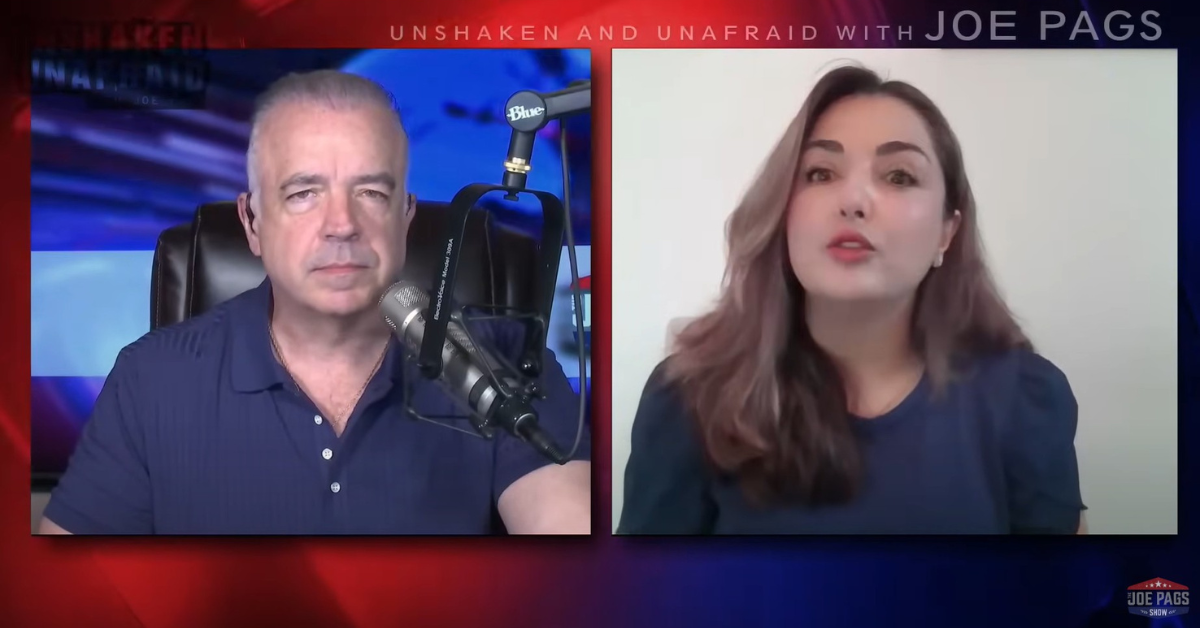Science
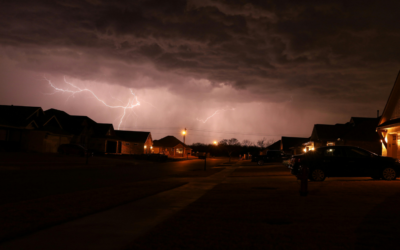
Will Summer 2026 Be The Season Of The Blackout? Energy Grid Fails In Major US City
New Orleans, Louisiana, fell into darkness on May 26 after operators were pushed to a “last resort” measure to prevent a larger crisis. The totally unprotected and unsustainable nature of the U.S. energy grid is an ongoing area of research for our experts at TMM. As you may have read in our prior reportage, the threats posed against our grid are myriad in nature, stemming from our cosmos, terrorism, and out-of-date equipment. From Energy Reporter Audrey Streb at Daily Caller News Foundation: New Orleans was plunged into darkness on Sunday afternoon when the region’s grid operator cut off power to reduce usage, a “last resort” measure to prevent a large-scale blackout, according to Nola.com, a local news outlet. The Midcontinent Independent System Operator (MISO), a major electrical grid operator, directed the energy company Entergy to reduce power with only three minutes’ notice to prevent a blackout, affecting nearly 100,000 customers, according to Nola.com. Power was fully restored after several hours, though concerns about the power grid’s reliability remain as President Donald Trump’s administration, energy policy experts and multiple North American Electric Reliability Corporation (NERC) reports have signaled that MISO is at an elevated risk for blackouts due in part to phasing out coal-fired power plants. “The forced outages were directed by MISO as a last resort, and done in order to prevent a more extensive, prolonged power outage that could severely affect the reliability of the power grid,” Entergy said in a Sunday statement. “How does this happen?” New Orleans City Council member Joe Giarrusso told Nola.com. “There are lots of questions that need answering.” Giarrusso and fellow New Orleans City Council member Helena Moreno said MISO warned Entergy of the outage just three minutes before turning off the power, though the reason for the short notice was unclear, according to Nola.com. The blackouts affected approximately 100,000 customers in and around New Orleans, according to 4WWL, a local CBS affiliate. Louisiana Public Service Commissioner Davante Lewis, whose district includes New Orleans, said that one Entergy generator was offline for scheduled maintenance when a second generator supplying the region also failed, the outlet reported. Lewis noted that the power demand exceeded projections at the time and added that he was unsure as to whether the second generator was operated by Entergy or Cleco. Two days before the blackouts, Secretary of Energy Chris Wright ordered MISO to ensure that the J.H. Campbell coal-fired power plant in West Olive, Michigan, continues to operate in order to prevent potential capacity shortages that could cause power outages. “This administration will not sit back and allow dangerous energy subtraction policies threaten the resiliency of our grid and raise electricity prices on American families,” Wright said Friday. “With President Trump’s leadership, the Energy Department is hard at work securing the American people access to affordable, reliable, and secure energy that powers their lives regardless of whether the wind is blowing, or the sun is shining.” The MISO grid powers portions of 15 Midwestern states and has reduced its reliance on readily available energy sources such as gas, coal or nuclear power, opting instead to pursue solar and wind resources to meet demand. This exchange is a driving factor of its potential risk, according to NERC. Click here to read the rest of DCNF’s reportage. Energy Threats Looming? On April 28, 2025, a still-unknown incident caused the entirety of Europe’s Iberian Peninsula to crash into darkness. Any device not powered by batteries was rendered useless, transport systems were immobile, stranding countless people across the continent. It was described as the “blackout of the century” by Space.com, and may have been caused by an still-impending threat from our cosmos: solar storms. Somewhat bizarrely, almost a year to-the-day prior, the U.S. conducted its first ever space weather simulation exercise, the details of which were released in mid-April 2025. Things didn’t go well. (FULL STORY: US ‘Unprepared’ For Major Solar Storm, Exercise Reveals) Any terrorist wishing to do serious damage to America’s grid can also target our power substations, as well as using EMF devices, according to the Daily Caller. “Grid failure is a real and imminent threat, a devastatingly deadly occurrence leading to life-threatening shortages of heat, food, and water. If protective measures are not taken, we will experience catastrophic failures leaving citizens in states of starvation, death, destruction, and darkness for months,” reads the description for “Grid Down, Power Up”, a documentary detailing the core vulnerabilities in our grid and their solutions. As we can see from NOLA, one of the biggest threats to our energy grid are repeated, probably mitigatable issues. TMM Analysis Telling your local, state, and federally elected officials that your vote depends on them fixing our failing and vulnerable energy grid is your right as an American. Did you know that if just 10 people write to their elected officials on one issue, that official has to take action. “If even just eight people write me a letter on the same issue, I know I have a crisis on my hands,” one official once told us at TMM. That’s why we work with Million Voices to streamline the process of sending letters to your elected officials on the issue that matter to you. Click here to learn more.
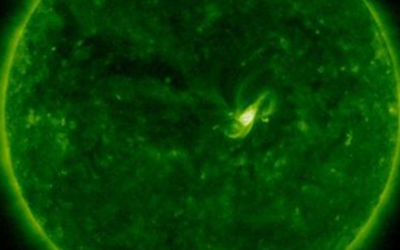
US ‘Unprepared’ For Major Solar Storm, Exercise Reveals
Details of a first-of-its-kind space weather emergency preparedness exercise conducted in May 2024 to test the U.S. response to a cataclysmic solar storm were released in spring 2025. Things didn’t go well. On April 28, 2025 (less than a month ago from the time of writing), a still-unknown incident caused the entirety of Europe’s Iberian Peninsula to crash into darkness. Any device not powered by batteries was rendered useless, transport systems were immobile, stranding countless people across the continent. It was described as the “blackout of the century” by Space.com, and may have been caused by a still-impending threat from our cosmos: solar storms. Somewhat bizarrely, almost a year to-the-day prior, the U.S. conducted its first ever space weather simulation exercise, the details of which were released in mid-April 2025. (MORE NEWS: Mainstream Media Finally Wakes Up To Massive Geological Threat To US) The exercise ran from May 8-9 and was designed to simulate and review our nation’s (specifically, our government’s) preparedness for a “severe space weather event,” such as a massive solar storm that interferes dangerously with Earth’s magnetic field. Interagency coordination, response protocols, and communications throughout industry and various critical infrastructure were all put through the test, which included: Intense radiation exposure to satellites, astronauts and commercial aviation Radio communications outages and disruptions Loss of functionality or degraded performance of GPS for precision navigation and timing Reduced ability to communicate with and track on-orbit satellites Local- to regional-scale power outages, affecting railways and even pipelines The hypothetical scenario was adapted from the Department of Homeland Security’s Exercise and Evaluation Program (HSEEP), included more than 25 federal, state, tribal, and local agencies, and ran participants through a “series of solar events with wide-ranging effects on Earth as well as the region between Earth and the moon.” What Happens During A Major Solar Storm? When the sun releases huge bursts of energy, particles, and other materials, we call it a “solar storm.” They range in scale from A (weakest) to X (strongest), according to NASA. The scale works similarly to the Richter scale, with each class adding a 10-fold increase in energy. Along with the aforementioned impacts to core modern technologies, such as GPS and other navigation systems, there are significant threats to aviation and satellites when they’re bombarded by these solar materials. And if there are threats to aviation and satellites, there are threats to those of us here on the ground. If you’ve a spare 15 minutes or so, we highly recommend watching this excellent episode of “The Why Files” to learn more about the potential impacts of minor and major solar storms. You can also listen to the podcast version by clicking here. How Significant Is The Threat of Solar Storms On the extremely biased “Modern Memo Scale of Danger,” solar storms are around an 8/10. Though not as physically destructive as an asteroid impact or nuclear apocalypse, there is a very real chance an extreme solar storm could cause the latter through disruptions to our nuclear facilities. The largest solar event known to science occurred around 12,350 B.C. (which oddly coordinates closely with the Younger Dryas, right at the end of our last major Ice Age), and was so massive its discovery “expands the timeline and intensity of known solar activity and sets a new upper boundary for such solar phenomena,” according to a 2025 study detailed by Astrobiology. These massive storms are called “Miyake events,” and increase the normal production of various isotopes such as radiocarbon (14C) in the atmosphere. The event and post-event impacts of solar storms on the scale of Miyake events are myriad, ranging from mass civil disruption, loss of life, infrastructural collapse, to all-out civilization reset. It all depends on how a storm impacts our energy grid. But again, we simply don’t know enough about them to know more than the major risks to our grid and modern lifestyles. “Understanding its scale is critical for evaluating the risks posed by future solar storms to modern infrastructure like satellites, power grids, and communication systems,” writes co-author Kseniia Golubenko. (MORE NEWS: Best Crops To Grow During A Nuclear Apocalypse, According To Scientists) “Grid failure is a real and imminent threat, a devastatingly deadly occurrence leading to life-threatening shortages of heat, food, and water. If protective measures are not taken, we will experience catastrophic failures leaving citizens in states of starvation, death, destruction, and darkness for months,” says the minds behind the documentary “Grid Down, Power Up.” Solar storms are uncontrollable, but we have more options to mitigate their impact than we would a major earthquake. Right now, we’re at our solar maximum. This is a time when our sun emits the most energy during its roughly 11-year solar cycle. If we’re going to be hit with a solar storm capable of disrupting all technologies across North America, it’ll be soon. What Did The Exercise Reveal? Here are the key findings, according to the National Environmental Satellite, Data, And Information Service (NESDIS): Demonstrated the need for better coordination to produce meaningful and understandable Space Weather notifications that are useful for operations and clearly describe the potential impacts on critical infrastructure. Emphasized the importance of a whole-of-government approach, especially federal-regional-state level coordination and awareness, while also highlighting existing gaps that need filling to ensure streamlined and rapid response. Provided opportunities to understand current technology limitations and discussed possibilities for improved forecasting capabilities, including suggestions to place spacecraft farther upstream to provide earlier warning of impending storms. Underscored the need for a national space weather education campaign to raise awareness of risks and improve public understanding. Demonstrated the need for a more coordinated and streamlined communications plan with the public through federal, state, and local agencies, and on social media, with particular emphasis on impact rather than technical science. Served as an exemplary event demonstrating the benefits of a whole-of-government exercise to prepare for scientifically complex threats. We absolutely agree that this was an exemplary event and exercise, but will we see any actual action…

Best Crops To Grow During A Nuclear Apocalypse, According To Scientists
An article published in early May by Live Science revealed what some experts believe would be the best crops to grow during a nuclear winter, or following a solar storm or similarly catastrophic event. Congratulations, you’re one of the few people who managed to survive nuclear war, the next extreme pandemic, or the crushing blow of a solar storm. Your goal is to plant sugar beets, spinach, wheat and carrots, as these are your go-to apocalypse crops, according to a study published in the journal PLOS One. The scientists wanted to figure out the best crops for people surviving on small amounts of land. While the study wasn’t inspired by any particular global event, lead author Matt Boyd noted to Live Science that the study “turned out to be very relevant, obviously, to the current geopolitical environment.” What Is The Best Inner-City Crop? The study looked at the best crops to grow in a city during normal times, and then during a nuclear winter. It turns out that peas are the best because of their high protein content and they’re well adapted to grow in small spaces. “If you want to feed someone, growing peas minimizes the amount of land you need to feed that person,” Boyd continued. (RELATED: Guys, We May Have Found The Most Addictive New Outdoors Show On YouTube) But if you live in climates that can get a little chilly, peas aren’t going to be your best friend. The plant isn’t frost resistant, meaning they’re not great for growing during a nuclear winter (or volcanic winter, or the aftermath of an asteroid impact, all of which have relatively similar outcomes day-to-day). Spinach and sugar beets were found to be the best for such conditions, so be sure to stock up on some seeds before it’s too late! The major limitation of the study is that city dwellers are probably the least likely to survive any type of apocalypse. (RELATED: Joe Pags Launches ‘Unshaken And Unafraid’ With Salem Media Group; WATCH The Epic Premiere Episode) Actually, city folks are the least likely to survive in a minor societal disruption that upends our food and water supply. Those who did make it through will either hunker down in their homes or venture out into the natural world and somehow find a way; and they might set-up themselves and their communities for long-term success. “People settled cities where they did for a good reason,” one expert Theresa Nogeire-McRae told Live Science. “It was the rich soil near riverbanks. It’s a good commodity. Let’s not throw that away.” Get Involved Today! Very few mid-sized American cities have open, clean land around their major rivers, and the waterways are typically filled with filth. Most of these areas were turned over to industry over the last hundred years, or coated in concrete for the purposes of “urban planning.” Urban gardening and agriculture is something we care about deeply at The Modern Memo. If you live in a city or town on a river, take a photo of any open land that you think could be used for crop production. Post it and tag us on social media (X — @TheModernMemo) Together, we can start reshaping minds around how best to use the planet God gave us to support ourselves and our future.
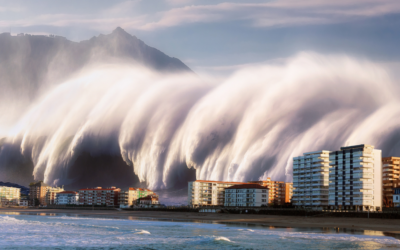
Mainstream Media Finally Wakes Up To Massive Geological Threat To US
A study published in late April has finally woken up the mainstream news media to the threat of the Cascadia Subduction Zone, a boundary that could reconfigure the physical landscape of the Pacific coast when it next shakes. The Cascadia fault stretches a startling 600(ish) miles from the northern reaches of California through to British Columbia, according to AccuWeather. Quakes in this region go mostly ignored, but only because a monstrous tectonic rupture hasn’t hit for an estimated 300 or more years. When Cascadia awakens, she shakes the West coast with a magnitude-9.0 quake for upwards of five minutes, often sending a tsunami upwards of 100 feet tall toward the shoreline, NBC reported. The latest study points to a new threat posed by the fault. “Along the Washington, Oregon, and northern California coasts, the next great Cascadia subduction zone earthquake could cause up to 2 m [6.5 feet] of sudden coastal subsidence, dramatically raising sea level, expanding floodplains, and increasing the flood risk to local communities,” the authors wrote. Where Is The Risk Area? Major cities in the risk area include Vancouver, Seattle, Portland, but also those to the north and south and eastwards in-land. “This lesser talked about hazard is going to persist for decades or centuries after the earthquake,” co-author Tina Dura told NBC. “The tsunami will come in and wash away and it’s going to have big impacts, don’t get me wrong, but the lasting change of the frequency of flooding … that’s going to have to be dealt with.” (EXCLUSIVE: 20,000,000 Sick Americans Abandoned By Medical ‘Oligarchy’ Controlled By Elites; Can We Fix It?) Fossil records suggest the land-drop during previous Cascadia quakes turned dry ground into tidal mudflats along estuaries throughout the Pacific Northwest. “That’s going to happen again and we’ve built up a lot of those areas,” she added. It’s a good time to remember that the most dangerous earthquake fault on the West Coast is the Cascadia Subduction Zone, not the San Andreas Fault. The Cascadia Subduction Zone is capable of producing a megathrust earthquake with a magnitude of 9.0+ and a resulting tsunami up to… pic.twitter.com/9znJ9Sz4tM — Colin McCarthy (@US_Stormwatch) December 5, 2024 When Can We Expect Another Quake? Cascadia last shook in 1700, with previous quakes hitting once every 450-500 years on average. The National Seismic Hazard Model estimates a 15% chance of a magnitude-8.0 or stronger quake within the next 50 years. (RELATED: Joe Pags Launches ‘Unshaken And Unafraid’ With Salem Media Group; WATCH The Epic Premiere Episode) Federal officials, experts, basically anyone who knows about Cascadia believes that when the quake hits, it will likely be the worst natural disaster in the nation’s history, with reports suggesting: 14,000 fatalities* 100,000+ injuries 620,000 buildings collapsed, including 100 hospitals and 2,000 schools There are more than 2,500,000 people living between Portland and Vancouver. We believe these estimates are conservative and only represent those killed by direct impacts from the earthquake and tsunami. “There’s the flood itself and then there’s the basically permanent change to land level at the coast and that has a big impact for what those communities have to plan for,” Pacific Northwest Seismic Network Harold Tobin explained to NBC. “Where are you going to put your school or hospital? Where are you going to build your transportation network? I think it’s important to take the long view.” Long-term Planning Shortened Pain A great failure of the western mindset is our ignorance of time. We eat news in three meals a day, throw out fads faster than seasons change; we replace our politicians rapidly — and this is a good thing, as we all know how power corrupts. But we must reshape our thinking toward the natural world. We do not dominate our physical landscape. We are placed here as shepherds, existing at the will and mercy of our living planet. It would be wonderful if everyone could shut up about “issues like climate change” and instead learn to live in symbiosis with the things God gave us so we can prosper for generations to come. We hope to foster an environment of common sense education around the world and all her processes here at The Modern Memo.
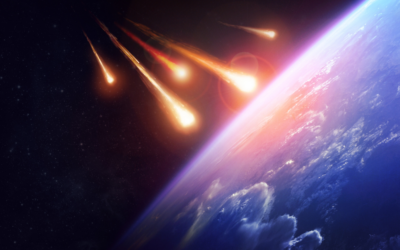
Soviet Spacecraft May Hit US Thanks To Uncontrolled Reentry
AccuWeather reported Friday that a defunct Soviet spacecraft may crash into Earth, possibly somewhere in the contiguous U.S., between May 9 and May 11. The spacecraft named Kosmos 482 launched in 1972 on a voyage to Venus, but an issue trapped it in orbit around Earth, where it sat in a state of limbo, according to AccuWeather. “Because the probe was designed to withstand entry into the Venus atmosphere, it is possible the probe (or parts of it) will survive reentry at Earth and reach the surface,” NASA said in a statement. The “uncontrolled” reentry could see the spacecraft hit anywhere in “Africa, South America, the contiguous United States, Australia and New Zealand, most of Europe and most of Asia,” AccuWeather noted. Even though this sounds like most of the inhabited world, a majority of this area is ocean. Should the craft land in our oceans, it likely wouldn’t pose any threat to human life. Before you ask, yes: the craft was fitted with a parachute for reentry, but given the existing issues and age of the materials, scientists think it’s unlikely to successfully deploy. (TAKE A POLL: Do You Believe in UFOs?) How Big Is The Risk Of Impact? The chances of Kosmos 482 hitting your home are astronomically low, but never zero. Earth is smashed about by bits of space debris — manmade and cosmic — on a daily basis. For the most part, we don’t notice when a meteorite hits the ground by our feet. All physical objects have to go through a heck of a lot of friction to reach Earth, and end up miniscule in size by the time they reach us. Then there are the space rocks that cause cataclysmic — near-extinction-sized events. When most people think of asteroids destroying the planet, their minds go back to the dinosaurs and the Chicxulub crater that turned these ferocious monsters into chickens. The Lost City of Atlantis is not a Disney Movie. The legend originates from the ancient Egyptians! 📍They said it was destroyed 11,600yrs (before present day) 📍The ‘Younger Dryas Climate Catastrophe’ was exactly 11,600yrs ago Not a coincidence. It’s evidence Atlantis existed. pic.twitter.com/SgqjXdOvLP — Jimmy Corsetti (@BrightInsight6) May 18, 2024 Just 12,800(ish)-years-ago, an asteroid may have temporarily restarted our ice age — an event known as the Younger Dryas cooling event. Geological evidence from this time period suggests mass amounts of cold, fresh water rushed into the North Atlantic, cutting off the flow of warm water north via the Gulf Stream and reshaping global coastlines entirely. (RELATED: Guys, We May Have Found The Most Addictive New Outdoors Show On YouTube) Experts and independent investigators suggest this sudden shift in climate was caused by an asteroid either hitting or bursting the ice coating our northern hemisphere. Take Action On Asteroids There are many other theories about, and surrounding, the Younger Dryas, and we’re going to talk about them as often as we can on The Modern Memo. Mounting evidence suggests we are not the first technologically advanced civilization to live on Earth. At the very least, Big Archaeology and mainstream institutions are hiding our history; either through lack of research or purposeful obfuscation. We hate that. A lot. Ignorance of our past leaves us blind to threats from the future. Right now, we don’t know exactly what you can do to help solve this issue — but a great place to begin is with educating yourself on the topic. We’ve included links to videos and our favorite experts in this article. Check back soon for more updates. Thanks for hanging out – TMM
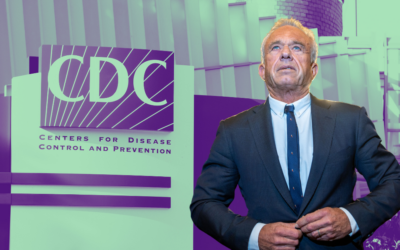
EXCLUSIVE: 20,000,000 Sick Americans Abandoned By Medical ‘Oligarchy’ Controlled By Elites; Can We Fix It?
Opinions expressed are solely those of the author(s). In former President Biden’s January 2025 farewell speech, he warned of the risk of the U.S. becoming an oligarchy, a government controlled by a select group of ultra-wealthy and elite individuals. While Biden was referring to the government, my over two-decade career in healthcare has led me to see a similar dynamic in science and medicine. For years, this elite group’s dominance went unchallenged, accepted by both the medical community and the public, perhaps out of naivety or complacency. However, the COVID-19 pandemic pulled back the curtain, offering the public a rare glimpse into how medical policies and decisions are made, revealing the sway of these elites. Rise of Medical Censorship Debates over treatments, vaccine development, vaccine mandates, and public health strategies like lockdowns and school closures showcased the power dynamics at play. Over time, as some of these decisions were questioned or refuted, there emerged a demand for accountability and a questioning of expertise, with some moves seen as missteps or swayed by external pressures rather than scientific merit alone. Adding fuel to the fire, these elites mocked and insulted anyone, including their peers and colleagues, while calling for censorship of those questioning their dominance and views. Who are these elites, and what role do they play in medicine? They are highly educated individuals from prestigious institutions whose influence shapes both public opinion and medical practice through their research and academic roles. Their control is solidified by publications in high-impact journals, which set the standards for medicine. In federal health agencies like the NIH, FDA, or CDC, they wield significant power over policy, treatment approval, and research funding. Through books, media, and platforms like TED talks, they also mold public perception and policy, often setting the health agenda. Their decisions can skew healthcare towards specific philosophies or interests. The dominance of these elites rests on three pillars: control of information, gatekeeping opportunities, and influencing policy and practice. They manage information flow through the peer-review system, where high-impact journals act as gatekeepers, often favoring insiders. This control shapes medical education and practice. Their prestigious roles and platforms grant them access to funding and career opportunities, making it tough for outsiders to challenge or innovate within established narratives. Questioning their orthodoxies and dominance will often lead them to publicly insult you, question your credentials and training, and send journalists looking for a story and a social media mob after you. Silencing The Truth On COVID-19 and the Vaccines My collaboration with Dr. Bruce Patterson on long COVID research over the last four years has shown similar patterns. Long COVID, a condition defined as new onset symptoms persisting beyond three months post-SARS-CoV-2 infection, is affecting over 20 million Americans and 65 million people worldwide. The research focus, funding, and narrative around long COVID are heavily shaped by these same academics and medical elites, influencing which symptoms are addressed, treatments pursued, and patient management strategies adopted. There is a risk that novel insights or treatments might struggle for acceptance unless they align with the views of these influential figures. This dynamic is starkly illustrated by the NIH RECOVER COVID initiative, a $1.6 billion US taxpayer-funded effort on long COVID that has been criticized for its shortcomings. A report in STATNEWS highlighted a lack of transparency in funding criteria and dispersal; criticized the glacial pace of research; and noted the failure to set up well-designed clinical trials to study various therapeutics. Research on symptoms and patient surveys has minimal clinical utility in 2025 when millions of people continue to suffer and enough published research points to vascular inflammation driving the underlying pathology. Competition Over Collaboration I have observed more competition rather than collaboration among long COVID research groups. The divisive politicization of our country has falsely and cruelly framed long COVID as a quasi-liberal female psychiatric disorder. Likewise, those people suffering from post-COVID-19 vaccine syndrome, a condition similar to long COVID, have been ignored, smeared, and abused as “anti-vaxxers.” With the newly confirmed Robert F. Kennedy as Secretary of Health and Human Services and the nomination of Dr. Jay Bhattacharya at the helm of the NIH, there exists a tremendous opportunity for both leaders to shape the long COVID narrative by shifting towards an inclusive and transparent policy-making process and fostering environments for collaborative rather than competitive research. Besides fostering collaboration and transparency in research funding, well-designed clinical trials on FDA approval pathways are desperately needed for the millions of disabled and suffering patients. By addressing these areas, there’s a chance to mitigate the oligarchic tendencies within medical science, increase accountability, and better serve the health needs of the population, particularly those with conditions like long COVID. Ram Yogendra M.D., M.P.H. is a board-certified anesthesiologist with a diverse background in medicine and public health. He has experience in infection control and surveillance from prior public health roles before shifting to clinical practice. Dr. Yogendra now contributes to research on Long COVID and post-COVID vaccine syndrome, co-authoring several studies on immune responses and treatments. Follow him on X @dryostradamus Read Dr. Ram Yogendra’s articles here: Long COVID diagnostic with differentiation from chronic lyme disease using machine learning and cytokine hubs – Nature Case series: Maraviroc and pravastatin as a therapeutic option to treat long COVID/Post-acute sequelae of COVID (PASC) – Frontiers Immune-Based Prediction of COVID-19 Severity and Chronicity Decoded Using Machine Learning – Frontiers Persistence of SARS CoV-2 S1 Protein in CD16+ Monocytes in Post-Acute Sequelae of COVID-19 (PASC) up to 15 Months Post-Infection – Frontiers Get News. Take Action. The Modern Memo was not designed to be your go-to site for breaking news; we’re better than that. You’re reading this post because you care more about America’s future than simply reposting rage-inducing headlines. You are the kind of patriot who wants to take action with your new knowledge; this is where we come in. Like you, we’re absolutely sick and tired of not being able to shape policy or protect American families outside of election…
- 1
- 2
